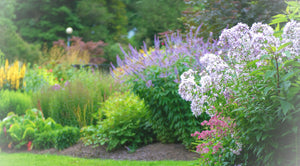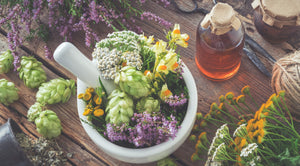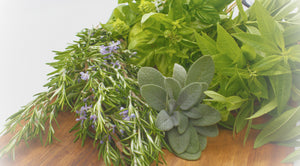History:
The noble bay leaf plant has a history like no other herb. Legend and myth surrounded it even before the champions of the first Olympic Games, in 776 B.C, were crowned with garlands of the glossy green leaf. Ancient mythology tells us that the sun god Apollo pursued the uninterested nymph Daphne. Apollo was relentless until the gods granted her mercy by turning her into a laurel, or bay leaf plant.
The Greeks still refer to the tree as a Daphne. Psalms 37:35 illustrates the esteem held for the mighty bay leaf plant in Biblical times: "I have seen the wicked in great power, and spreading himself like a green bay tree."
Romans considered the bay tree a symbol of glory as well as protection from thunderstorms. Nero believed bay trees purified the air and Roman victors would wipe the blood from their swords with the leaves. In Shakespeare's time superstition held that when bay trees died, disaster was sure to follow.
The Bay Leaf Plant is also known as Laurus nobilis. Laurus is the Latin word for bay tree. Nobilis means "reknowned".
We grow gorgeous bay leaf plants at reasonable prices!
Uses:
The oil of bay berries was used for a wide range of medicinal purposes from a cure for pimples to "all griefs and pains proceeding from wind...," according to Culpepper's Complete Herbal from the 1600's. So, in addition to being a culinary herb, the bay leaf plant is also a medicinal herb.
Today the bay leaf is used around the world for culinary purposes. It is picked by hand from the evergreen Laurus nobilis or bay tree native to the Mediterranean. The trees will grow to heights of 60 feet with thick and shiny leaves.
Thin layers of leaves are weighted down, to prevent curling, and dried in the shade. Drying in the sun causes them to turn brown and lose much of their essential oil. The flavor intensifies with proper drying but old leaves will fade quickly.
Sweet Bay leaves are available in many forms, commercially. But, as with most herbs, fresh Bay Tree leaves are the most delicious. And there's no better freshness guarantee than harvesting from your own tree.
Bay makes a lovely landscaping tree in areas with mild winters. Easily pruned and shaped, it is also an excellent potted plant (to be brought indoors during cold winters).
Bay leaves give off a delicate aromatic scent while offering a mildly bitter flavor. The bay leaf from California is stronger and oilier compared to those grown in other parts of the world. Turkey is a major supplier of imported bay leaves.
The most common form of bay leaf as an herb is the dried whole leaf. It may be crumbled into recipes or added whole. Crumble them well to avoid an unpleasant texture. Whole leaves should be removed before serving.
Should you find fresh leaves, remember that they will be slightly more bitter than the dried version. You might shred a fresh leaf before adding to a recipe. Although rather difficult to find, ground bay leaves are convenient to use and excellent for creating your own spice blends.
Bay leaves are frequently used in soups, fish and meat dishes or marinades and vegetables. It is important to the classic bouquet garni. Bay leaves will always add more flavor to bean dishes and stews.
Care:
Bay Trees grow best in full sun - which is western or southern sun exposure. Provide some shade during the hottest part of the day during summer.Generally, potted Bay Trees can tolerate winters that are not extreme - if well mulched and adequately covered. If containerized, move the plant to a sheltered area before frost.
Gradually move containerized Bay Tree into full sun after wintering it indoors.
Soil:
Well draining; preferably a mix containing sand.
Site:
Full sun. Filtered sun is good, as long as it's western or southern.
Water:
Frequently. Keep soil evenly moist. Drip irrigation is the best watering method for Bay Trees.
Fertilizer:
Time release/balanced.
Since Bay plants are slow growing, it makes an excellent container plant. Leave the pot outside during summer and bring it inside for the winter in Zones 2-7.
The small, tight buds of future Greek Bay flowers are highly fragrant and overflowing with flavor. They are prized by some cooks for use with venison.
They need to be used sparingly because the oils are very concentrated. When the flower buds open, they will will reveal tiny cream colored flowers that will make bluish black berries.
These berries will be followed by a flush of new growth, which will produce soft, bright green leaves on the tip of each branch.





